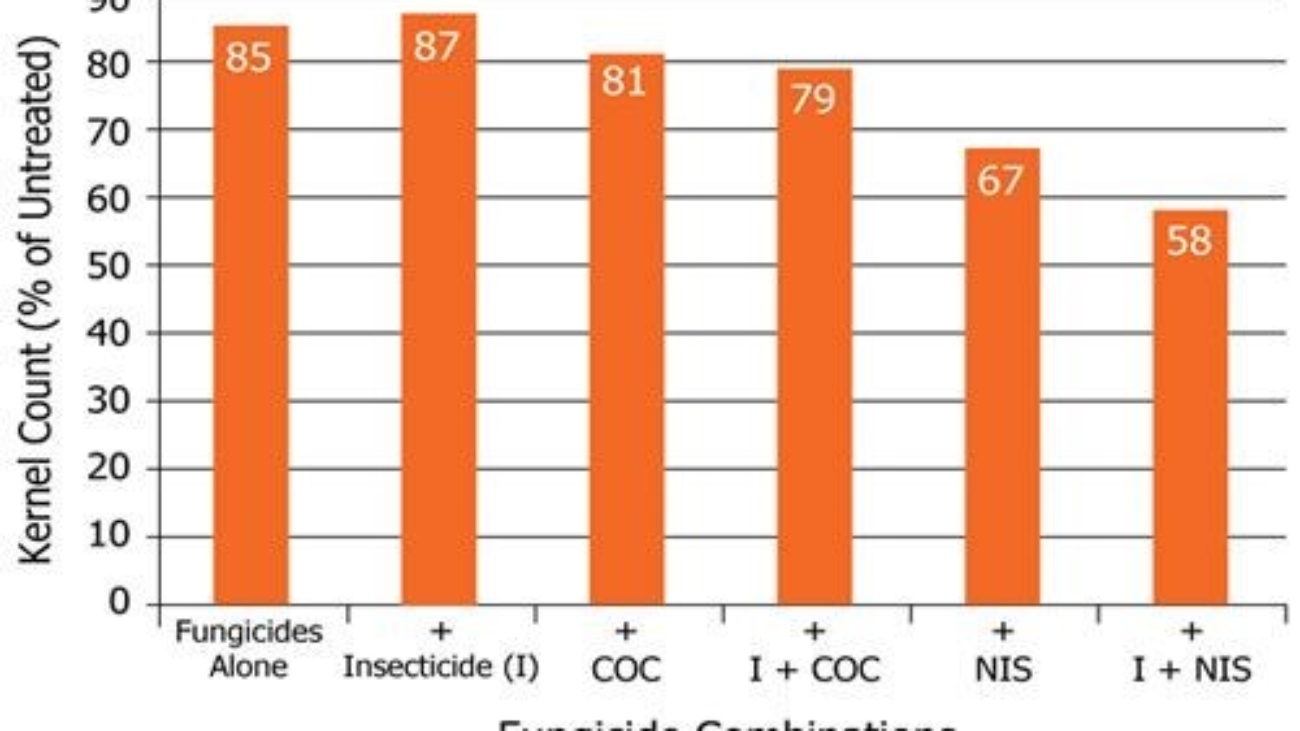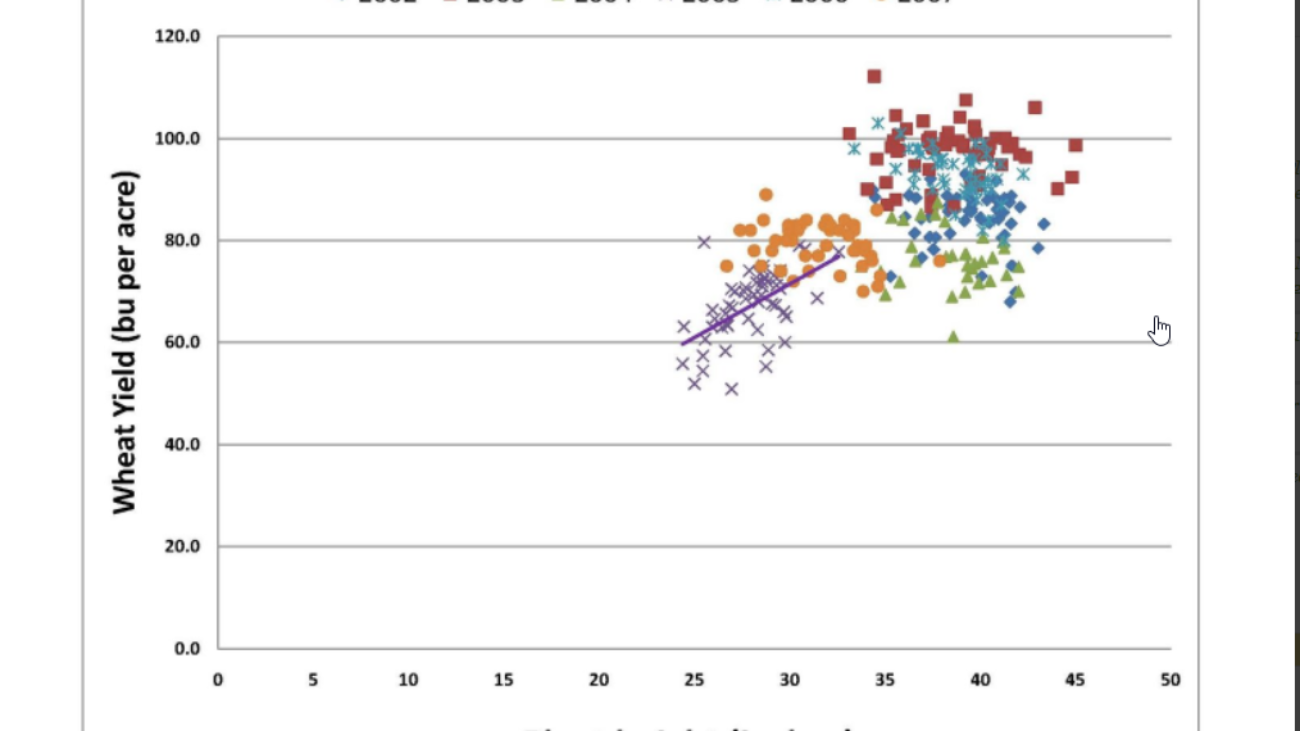Tales From Teels 7.14.22 Bonus
Arrested ear development is not a disease but it is a physiological disorder that can have a significant impact on yield. At maturity ears have shorter cobs, fewer kernels and stunted or blunt tips. These problems have been linked back to fungicide applications made at or around V14-VT. This was a huge issued in the Midwest in 2007-2010 and through research they have linked it back to NIS products. Many spray mixtures contain adjuvants or emulsifiers in the final formulated product, and these product formulations have characteristics similar to those of nonionic surfactants. The purpose of an adjuvant is to help in the proper formulation, suspension, and application of an active ingredient with the intended purpose of getting more active ingredient to the proper location in the plant. Adjuvants are designed to have a portion of the molecule that is more polar and thus, helps with dissolving or dispersing an ingredient in water. Adjuvants also contain a lipophilic tail that helps with the solution or dispersion of active ingredient in nonpolar materials, such as plant cuticles and membranes. Each adjuvant type has a specific set of physical properties that make it best suited for a particular use. For crop protection chemicals, nonionic surfactants are often the preferred adjuvant system because these molecules have no ionic charge that would limit penetration across a plant cuticle or membrane, yet they have sufficient water solubility and “combinability” with nonpolar molecules to help these molecules get to the active site in the plant.
Getting down in the weeds a little further the research actually discovered that surfactants containing Alkyl Phenol Ethoxylate or APE were linked to this disorder. There are different schools of thought into the what is happening but Purdue study suggests that the product to move into the ear cells. Understand that V14 is the time when the ear shoots are just becoming visible. It is believed that the product washes off the leaf with rain or irrigation into the developing ear and this is the vulnerable initiation stage.
Tales from Teels 6.16.22 Burndown
- I was asked to share some thoughts in regard to burndown successes we have been having.
- Over the past couple of years my concern as always been absorption.
- I felt we were missing the boat, so I have tried many different things.
- I started using different adjuvants and combinations of them all.
- I was intrigued by a statement saying they utilized organic acids.
- I then started my research. In this research I felt if I had a product that had fulvic acid along with organic acids I may be able to influence absorption.
- I knew I wanted a product that had fulvic acid due to its size and ability to pass through membranes.
- At first I felt I was getting mixed results especially when tank mixed with glyphosate.
- I then hypothesized that this was the result of an antagonism between the glyphosate molecule and the added organic acid.
- At this time I added additional AMS to see if this would help.
- I was pleasantly surprised.
- I then played a little with the rates and came up with a combination that has been working quite well.
Powerhouse 1.5 qt/100 gal
AMS 1#/ac
Spectra OC 1 pt/ac.
Please see the attached video which illustrates what I am talking about.
Tales from Teels 6.6.22
Looking at the alfalfa in the area we are now laying down the first cutting. As we all know the value of alfalfa as with all commodities are higher than normal. When considering alfalfa the goal is to get the crop swathed, baled and moved then plan for additional cuttings. Regrowth is the key and in many cases the challenge. This process is regulated by hormones ( auxin) in the auxiliary and crown buds. There has been research with much success in the PNW which implements the use of Phytohormones and some foliar nutritional’s. The original purpose was to enhance RFV, which was accomplished. The other benefit they observed was faster regrowth after cuttings and in many cases an additional cutting as a result of this. There have been many different combinations that center around the addition of these products. With this in mind I would like to suggest some options.
- Incite 4 oz/ac + Chrome Plus 1 Gal/ac + Spectra OC 1 QT/ac
- Incite 4 oz/ac + Hype 2 qt/ac + Spectra OC 1 qt/ac
- Incite 4 oz/ac + Spectra OC 1QT/ac.
The advantages of applying these products are as follows.
- Tonnage many reports suggest an additional .75-1 ton/ac
- Quality Higher RFV with proper management
- Plant health
- Water efficiency a healthy plant utilizes water better.
- Consistency of product which can be a problem many times after the first cutting.
Contact your local salesmen to inquire about our Innova Products.
Tales from Teels 5.7.22
What an awesome rain. This along with the warmer temperatures has kicked the wheat into high gear. I have been hearing reports of wheat boot-head on the east side of our territory. I am seeing a lot of flag leaves out west here as well. Everyone has had concerns of the plant height. One common question, will this result in poor yields. My answer to this is it actually depends. First we need to look into what caused the wheat to be short in stature. Plant height can be affected by a number of things including water, temperature and solar radiation. This kind of spells out the why. I will now look a little closer at the correlation between plant height and yield. Notice the chart below which is from the Northern Great Plains. There are 6 cropping years represented here and only one time does yield and plant height produce a positive result. This suggests that height in and of itself has no direct bearing on yield. Understand that our head and spikelet count has been determined. The plant leaf area index threshold is much more important that plant height. This is defined as the total one sided leaf area per unit of surface area. We need enough light receptivity to be able to fuel all the internal processes to fill the head. If we have proper LAI then we will need the water and nutrients to complete he cycle.
I do not want anyone to assume I am saying that this is going to be a great crop. Understand, this crop has had a very tough life and as such we have impacted yield. I just wanted everyone to understand that shorter wheat does not necessarily mean poor wheat. I will mention that if we have a shorter crop our residue amount will be less than desirable. In fields with poor stands we may need to consider some sort of cover to allow us some residue for the winter. Another year another set of challenges welcome to Northwest Kansas, Eastern Colorado.
Chrome Info Sheet – Tales from Teels 5.5.22
For more information on Chrome, click on the link above!



